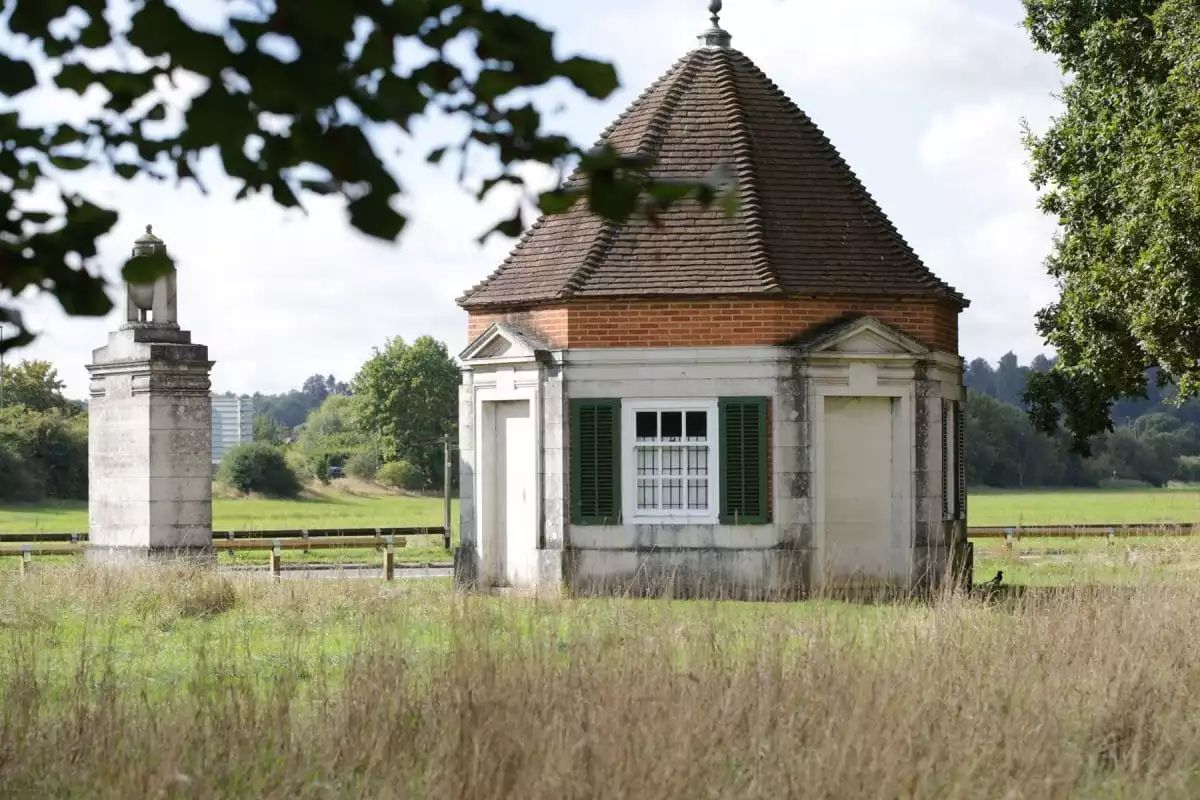
The story of the kiosks begins in 1929 when Lady Fairhaven bought the historic Runnymede Meadow, which was over 188 acres in size. American by birth, Lady Fairhaven was the wife of Urban Hanlon Broughton, an English engineer and later a Member of Parliament. When he died in 1929, Urban Broughton had been pending an elevation to the peerage. Since he died before the process was complete, King George V proclaimed that his wife should enjoy the fruits of her husband’s labour, and she was subsequently named Lady Fairhaven.
Lady Fairhaven bought Runnymede Meadow in memory of her late husband, commissioning Sir Edwin Lutyens to design and build a pair of memorials in the meadow. Not only was Edwin Lutyens a local English architect, he was also one of the most famous architects of his time. Lutyens became globally known for designing many important buildings, particularly monuments to commemorate the dead. Among others, he designed the Cenotaph in Whitehall.
The memorial kiosks and ‘piers’ (granite pillar) Lutyens built are still standing opposite each other to this day, continuing to commemorate Urban Broughton near The Runnymede on Thames. The kiosks are characterised by their stone octagonal bases, with windows, green shutters and a green door each. Next to each one is a stone pillar, topped with urns made of stone. Inscribed in each pillar is a memorial message to Urban Broughton from his wife. Lady Fairhaven and her sons gifted the meadow and monuments to the National Trust in 1931.
Edwin Lutyens – a Surrey local despite gaining recognition across the world – has also designed many other buildings and structures in the local area. At the other end of the Runnymede Meadow are two lodges and pillars. These lodges were originally intended to be houses for Runnymede wardens, but are nowadays used to house the National Trust café and an estate office. Lutyens also notably designed the Runnymede Bridge, which opened in 1961. Not far away at Windsor Castle, he also designed Queen Mary’s Dolls’ House – a four-storey Palladian villa built to a 1/12 scale. To this day, it’s one of the most visited parts of the castle.
The Runnymede on Thames enjoys a location like no other, brim-full of history, intriguing geographical features and stories from times past – many of which we can only imagine. We wouldn’t want to be anywhere else in the world.